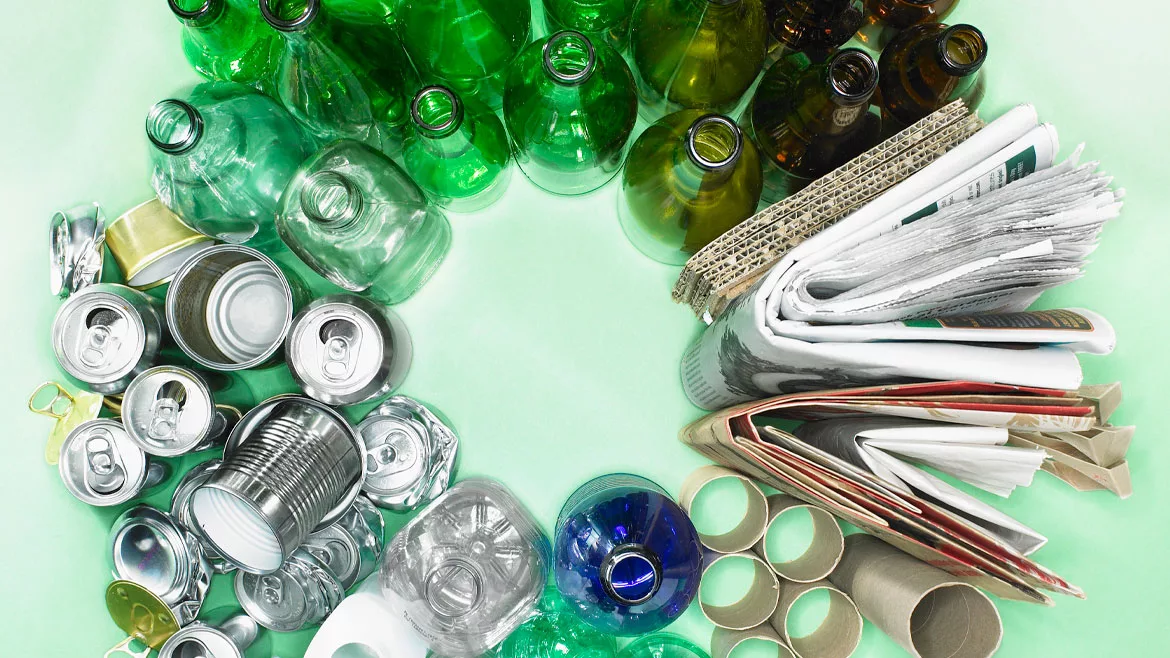Beverage Beat
Studies show need for recycling education, awareness and improved access
Recycling efforts being addressed nationally, globally

Image courtesy of Getty Images
As the holidays have come and gone, hopefully many of us were able to create memories that will last long past the season. However, something also tends to linger after the holidays that isn’t welcomed ― waste. According to the National Environmental Education Foundation, online shopping generates 4.8 times more packaging waste than in-store purchases. But on a positive note, in 2022, more than 93% of all cardboard boxes and nearly 68% of paper consumed in the United States were recovered for recycling.
Although this recycling stat is a positive as we head into the new year, some others shine a light on the education, awareness and improved access that might be needed to get other categories near this mark.
In partnership with Researchscape International, Boxed Water surveyed 1,016 participants from Nov. 3-6, 2023, to uncover more insights on American consumers’ perceptions when it comes to recycling.
It found that despite 82% of those polled indicating they are “somewhat” or “very” worried about the impact of single-use plastic, only 58% actively recycle. When it comes to which demographic struggles with recycling activity, it found that only 44% of Gen Z indicate that they “often” or “always” recycle. Baby Boomers were the most active with 67% noting “often” or “always.” Millennials and Gen X came in at 50% and 59%, respectively.
The following were the top cited barriers for recycling activity:
- 43% – Just because it goes in the recycling bin does not mean it gets recycled
- 33% – Lack of convenience
- 28% – Confusion about what can be recycled
With the data weighted to the U.S. population by nine demographic questions, the credibility interval for questions were answered by all respondents, plus or minus four percentage points, the report notes.
“In our interpretation, Gen Z may not be apathetic as much as they are potentially more aware of the declining — and abysmally low — recycling rates in the U.S.,” said Kavita Shah, vice president of marketing at Boxed Water, in a statement.
Yet, efforts are being made to support recycling programs and hopefully improve consumers’ sentiments toward the practice. For instance, in 2023, The Carton Council announced that entering 2023, 78.6 million U.S. households can recycle their food and beverage cartons through their local recycling programs. Resulting in more than 62% of all U.S. households having access to carton recycling.
The National Association for PET Container Resources (NAPCOR) also recently released its 2022 PET Recycling Report, which found that PET recycling rates held steady with the U.S. rate at 29% and the North American PET recycling rate at 37.8%. The report also highlighted that demand for recycled PET (rPET) was strong in 2022, resulting in more than 50% of end market consumption in the United States and Canada in bottle markets for the first time.
“There is a growing demand for recycled content from manufacturers within both the food/beverage and non-food bottle categories,” said Laura Stewart, NAPCOR executive director, in a statement. “This is continued evidence that packaging made from PET can be reused and repurposed and has a key role to play in the circular economy. Everyone involved, including manufacturers, consumers and packagers, need to work together and make significant changes to ensure enough PET is collected and full circularity can be achieved.”
But entities aren’t just looking at recycling improvements on a national level. A study commissioned by Crown Holdings Inc. and the International Aluminum Institute (IAI) was conducted by third-party global management consultants Roland Berger, which found 20 short- and long-term levers to bolster recycling systems and increase beverage can recycling rates in several countries.
“The carbon reduction potential of recycling cannot be underestimated; recycling has a huge role to play in the overall decarbonization of the aluminum industry, because recycling currently emits 0.6 metric tons of CO2e per metric ton compared to 16.6 metric tons of CO2e per metric ton for primary aluminum,” said Marlen Bertram, director of scenarios and forecasts at IAI, in a statement at the time of the release. “This report highlights key improvement levers for increasing those recycling rates–including improved awareness about the benefits of aluminum can recycling, investment in infrastructure and better waste streams.”
The report detailed potential areas of improvement and offered strategies to advance recycling progress in each country. Using this evaluation, Crown and IAI will work together with local partners in the UAE and in Asia Pacific that can help drive awareness and investment on regional levels, the parties noted.
As sustainability maintains an omnipresence in operations today, it seems that many are taking the steps to ensure that recycling can blossom going forward.
Looking for a reprint of this article?
From high-res PDFs to custom plaques, order your copy today!






